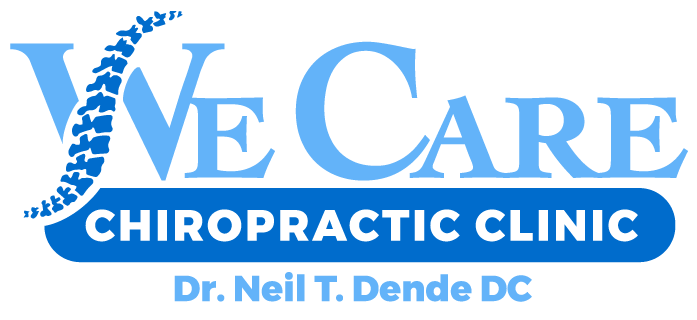We are sharing this article from the American Chiropractic Association including comments from medical professionals and Masters Winner, Jordan Speith as well as top PGA Tour player, Zach Johnson, whose Father happens to be a chiropractor! Read on to learn more!
AS MANY OF US KNOW, GOLF IS A CHALLENGING (AND OFTEN FRUSTRATING) SPORT. Many golfers feel the psychological component of golf is their greatest challenge and undervalue the biomechanics and conditioning that are required to play the game well. This is a mistake that eventually leads to poor play or injury. An extreme amount of compressive force – up to 10 times a person’s body weight – is exerted on the spine during the golf swing. Every joint involved in the swing is taken through its maximum range. If the body is not properly prepared to handle these forces, injury will eventually result.
“Formal golf instruction has been available to the general public for over 100 years, yet still most golfers, when they play strictly by the rules of golf, can’t break 100,” says Jeff Blanchard, DC, and golfer in Morro Bay, Calif., who trains chiropractic physicians on how to treat golf injuries. “In my experience, golf is not that difficult, but PGA instructors will confess that a student’s lack of fitness and conditioning is the primary barrier to improved performance.”
Dr. Blanchard indicates elbow pain is a common complaint among amateurs due to the lack of golf-specific flexibility. “Most amateurs bend their elbow during the backswing, then hyperextend the elbow during the downswing,” he states. “For tour pros, wrist injuries are prevalent, because on a professional level, players have to hit the ball where it lies, often out of deep, thick rough.”
Another common complaint is back pain, the result of an inefficient golf swing that creates too much stress on the back. According to Troy Van Biezen, DC, a Dallas-based chiropractic physician who works with professional golfers, four out of five golfers experience back pain as a result of repetitive swinging. “Regular chiropractic care helps alleviate back pain and greatly improves an athlete’s game,” says Dr. Van Biezen. “Neck, shoulder, elbow and hip pain are also frequent complaints among golfers of all ages. Chiropractic care is an effective non-pharmacologic solution for golfers who seek to rid themselves of pain and have a successful and enjoyable game.”
It Starts With the Swing
At age 45, Dr. Blanchard left private practice for 10 years to play professional golf. In his second year, a serratus anterior injury sidelined him for five months. “When I asked the PGA instructors what was happening in my golf swing to cause this injury, they had no idea what serratus anterior was,” he says. “When I asked the same question to the health care providers who were helping me during my recovery, they had no knowledge of golf-swing biomechanics.”
This led Dr. Blanchard to research and write the highly regarded Physicians’ Golf Injury Desk Reference. Today he works with amateur and professional golfers and also teaches a continuing education golf injury certification program (www.golfinjuryseminars.com) for doctors of chiropractic (DCs) based on his book.
All DCs who attend his seminars learn about the 14 areas of the body that are engaged during the golf swing. They are trained to evaluate each area for flexibility and/or strength. “If a patient fails any of the 14 exam points, correction protocols are taught and patients are given strengthening and stabilizing exercises to do at home, in conjunction with in-office treatment,” says Dr. Blanchard.
Dr. Van Biezen has traveled with the PGA Tour for 13 years. He was part of the PGA Tour medical staff for nine years, serving as the on-site chiropractor for about 145 players. “The golf swing is a unilateral movement that creates imbalances in the body, causing misalignments,” says Dr. Van Biezen. “These misalignments cause decentration of joints, resulting in undue stress and wear and tear.”
Today he travels with a number of PGA pros and works with high-level junior and college players at his Dallas office. His main goal is to be sure his clients are as symmetrical as possible in all planes of motion. This helps them get into positions for the golf swing that are efficient and repeatable. “I strongly believe chiropractic care is a must for all ages to play injury free, and for game improvement,” he says. “The game of golf is hard enough — why have your body working against you?”
Getting in Shape
Market research shows that most golfers believe better equipment will help them play better golf. However, statistical data, based on handicap averages over the past 30 years, prove otherwise.
“In short, the No. 1 barrier to improved performance on the golf course is the physical fitness and conditioning of the person swinging the club,” says Dr. Blanchard. “If you can improve your golf-specific flexibility and golf-specific stability, you can become a more powerful and more consistent golfer.”
If players are serious about golf, they must also get serious about conditioning. In his intermediate-and advanced-level training classes, Dr. Blanchard teaches fitness and conditioning protocols that are designed to help golfers improve their performance. Dr. Van Biezen has developed workout programs for his golf clients that vary from bodyweight stability exercises to simple isolation strength exercises using machines or more advanced functional-strength movements, such as Romanian deadlifts, Turkish get-ups, single-leg dead lifts or kettle-bell work. He also performs periodic health assessments on his clients.
“At the beginning of the year, blood work is performed to determine any nutritional depletions that may exist for micronutrients, hormones, antioxidants, etc.” says Dr. Van Biezen. “I also play the role of the nutritional consultant – for golfers to perform at a consistently high level. And, for the body to heal, repair and recover, nutritional supplementation and hydration are critical.”
Chiropractic physicians, of course, also treat golf-related injuries and imbalances when they occur. The most common problems are injuries to the neck, back, shoulder, hip, elbow and wrist. During the 2014 Masters Tournament, Dr. Van Biezen received a call in the morning from Zach Johnson, a player on the tour. Johnson had hurt his back, had difficulty standing and didn’t think he could play in that day’s round. Dr. Van Biezen met with him three hours before his tee time and took him through a modified functional screen. “I treated him accordingly, up to about an hour before his tee time,” he says. “Zach teed off that day and actually played well. I was very thankful to be able to help him, and the experience once again reassured me that chiropractic works.”
Becoming a Better DC
All athletes are looking for that edge that will improve their game, which is a “big reason why chiropractors are being more utilized in sports,” says Dr. Van Biezen. “I feel very strongly that players who regularly use chiropractors or travel with them full time stay healthier and don’t get injured as frequently as players who do not use chiropractic.”
Also, chiropractors don’t need to play golf to understand how to treat golf-related injuries. That said, DCs who don’t play golf can sometimes be dismissive of patients who do play golf. “Chiropractors who don’t play golf tend to underestimate the physicality and the injury potential of repetitive golf swings,” says Dr. Blanchard. “However, I make it very clear in my seminars that you do not have to play golf in order to become an excellent diagnostician and render treatment for golf-related injuries.”
He also points out that there is unrealized potential for generating new patients by forming an alliance with PGA instructors in your community.
“These instructors need your help, as they are trying to teach deconditioned students, many of whom become injured during the first months of lessons on how to play golf,” he adds. “The PGA instructor will work on the swing mechanics, while the chiropractor can focus on flexibility, joint mobility and postural stability. These cornerstones.” of chiropractic practice are the path to improve performance.”
JORDAN SPIETH Attributes Masters Win to Chiropractic
IN A RECENT ARTICLE (www.allamericanhealthcare.net/masters-winner-jordan-spieth-benefits-fromchiropractic), pro golfer Jordan Spieth calls golf a team sport – referring to the contributions made by his caddie, coach, trainer and manager and sports chiropractor Dr. Troy Van Biezen. So far this year, Spieth has won four PGA tournaments, including the Masters, earning more than $10 million.
Spieth has received chiropractic care since he was 14 to prevent injuries and optimize overall health and athletic performance. “Dr. Van Biezen is an important member of my team, and thanks to his care, my all-time dream of winning the Masters Tournament has become a reality,” Spieth says.
Dr. Van Biezen travels full time with Spieth, providing chiropractic care once or twice daily. “An individualized chiropractic care plan, including prevention and recovery-focused techniques, is essential for maintaining good health and gives Jordan a competitive edge,” notes Dr. Van Biezen.
ZACH JOHNSON Grew Up With Chiropractic
ANOTHER TOP PGA GOLFER is Zach Johnson, who has earned about $4.4 million on the PGA Tour so far this year. He, too, is no stranger to chiropractic care. Throughout his childhood and teenage years he received chiropractic care from his father, ACA member David Johnson, DC. Like Spieth, Zach Johnson has Dr. Van Biezen on tour with him as the professional sports DC.
“I adjusted Zach throughout his formative years, but less now that he works with Troy when he is on tour,” says Dr. Johnson. “I don’t need to offer much advice because his team includes a chiropractor, strength trainer, PGA professional golf coach and sports psychologist. I occasionally adjust him when he comes home or if we are visiting him.”
Watching the high level of training and care his son receives is a bit of an eye-opener for Dr. Johnson. “I’ve always known that chiropractic care improves function and balance and reduces pain associated with the grind of repetitive movement and high-speed movement in the golf swing,” says Dr. Johnson. “However, since Zach has been on the tour, I have seen firsthand how much professional golfers rely on chiropractic care. Zach also depends on nutritional and exercise support for maintaining his high level of performance and function.”
We Care Chiropractic
Located in Glendale, AZ, We Care Chiropractic has been providing the valley with the best chiropractic services for years. We Care Chiropractic emphasizes its focus on improving overall health, which can prevent further illness and pain. Let We Care Chiropractic help your body function at an all-time high. Chiropractors are a great alternative to traditional medicine, and much less costly than any surgical repairs. Feel free to contact the team at We Care Chiropractic today!







